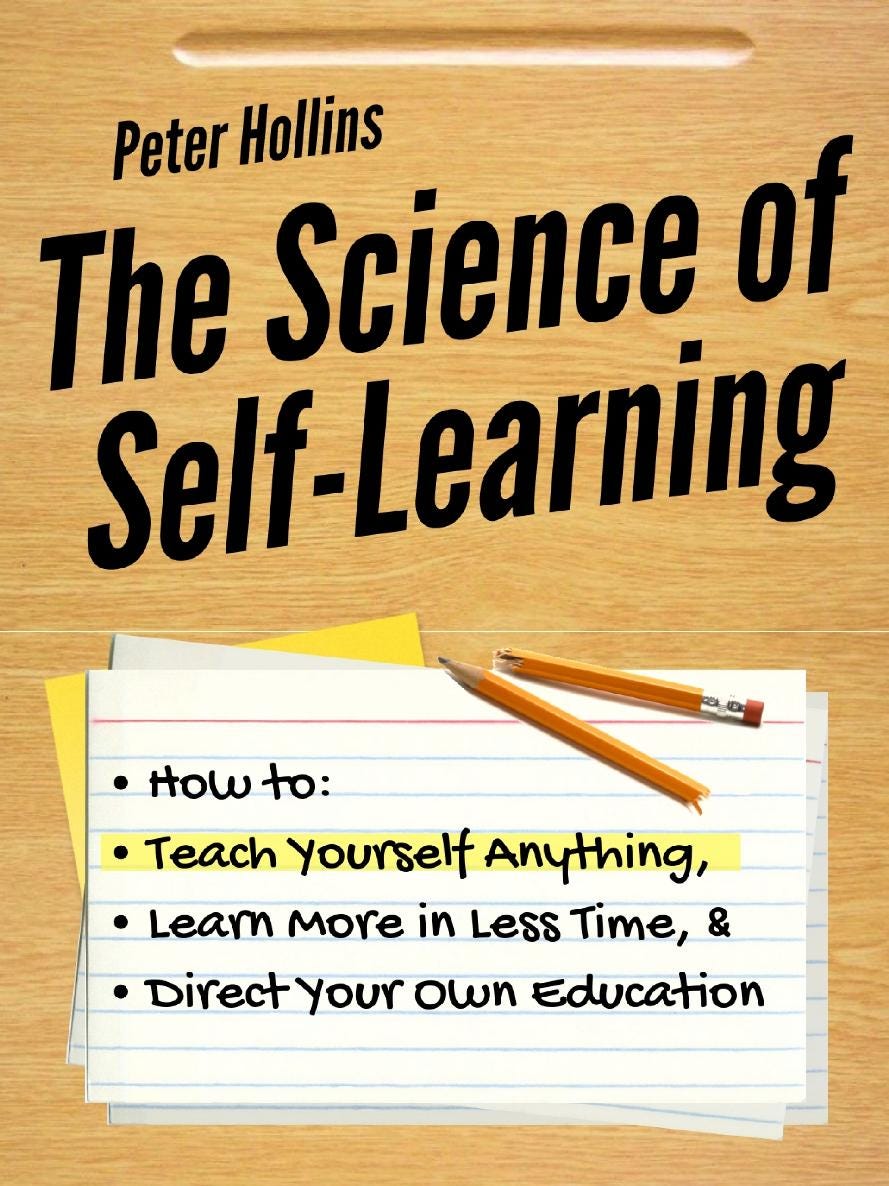The Science of Self-Learning by Peter Hollins !
A good book to guide you leverage self-learning skills.
Who is Peter Hollins?
Peter Hollins is a prolific author known for his expertise in psychology,learning and self-improvement. With a strong background in cognitive psychology, he brings a wealth of his knowledge to this book, helping readers unlock their full potential through the following effective self-learning methods.

What distinguish self-learning from traditional education?
Hollins begins by sheeding light on limitations of traditional education. He highlighted that traditional schooling fixed our thinking, answers and paths to closed-circuitry brain.It is mostly all about reading and regurgitation. Surely it is not best approach to keep up in our life.
Nevertheless, with self-learning, we can not only delve deeper into subjects and expanding knowledge base but also fostering a lifelong skills for learning.
Because your college degree is not ending point of your education.
Effective Self-Learning techniques:
(1) SQ3R method ( for how to read effictively)
This method teaches us how to actively engage with the material we are studying by surveying.
SQ3R stand for Questioning, Reading, Reciting and Reviewing.
By following these facts, we can enhance compression, retention and critical thinking skills.
(2) Cornell Note Taking ( for how to take easily memory recall note)
An organized approach to capturing and reviewing information.
This method include three parts : active listening, summarization and journalistic questioning.
Who, How, Why, Where, What questions are on left side of note and written down answers for those questions are on right side of note.
We can extract key answers from re-asking those questions by covering right sided paper.
(3)Feynman Technique (for how to get deeper understanding)
Inspired by physicist Richard Feynman.
It tells if you can you explain the complex concepts into easy-to-understand explanation to anyone, you can get deeper understanding and upgrade your mastery level of learning.
(4) Speed Reader Technique (for how to read with fast paced)
We can train our six muscles of eyes to read more words in a minute.
According to survey, 8th grade student can read 250words/minute, 450words/minute for average university student and 675 words/minute for university Professor.
By reviewing this survey, it is clear that our eyes can be trained by practicing. Of course, Professor have to read more words than undergraduate student. More and more reading bring your fast paced of words per minute.
In conclusion,
by implementing the strategies presented in this book, we can embark on a lifelong journey of effective self-learning, unlocking our true potential and acquiring knowledge in a way that suits our unique learning style. If you lost
in your self-learning journey, this book will guide you how to overcome it successfully.

